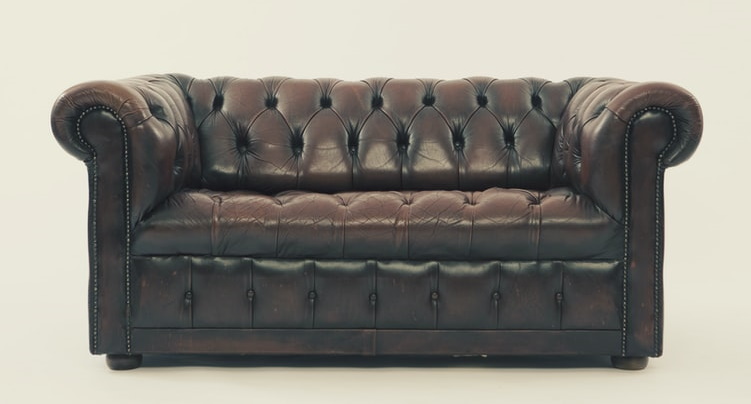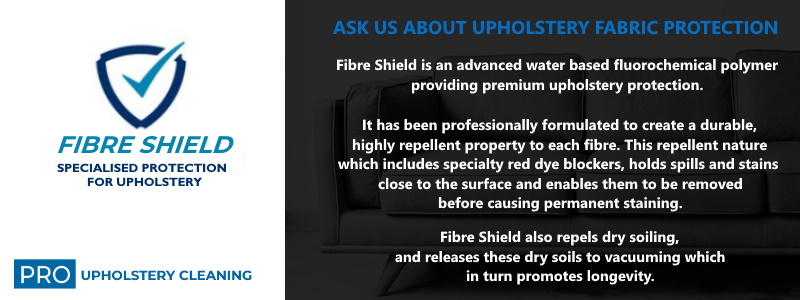How is Leather Made?
Leather upholstery refers to hides from different parts of an animal's body, as well as the colour and finish of the leather that is then upholstered onto a piece of furniture. It’s beautiful but also very durable when cared for. It can really liven up or compliment a room and can last for an extremely long time. We have actually cleaned leather recliners and sofas that were made in the 70’s, and they still look amazing!
Before you go out and buy leather furniture online or in person, it’s important to know about different types of leather and you may even wonder to yourself; how is leather made? This is because there’s often a lot of confusion or misinformation when it comes to buying leather, and people often get a quality that’s lower than what they think it is.
It’s important to note that leather will receive micro-tears and scratches over time from general use, such as sitting down, rubbing, and brushing against the material. These tears and scratches can be filled in and thus hidden by the dirt and grime on the surface, and a cleaning process can expose these pre-existing issues.
So, if you’re cleaning your leather sofa yourself or have hired a professional leather cleaning service to do it for you, don’t worry! Those tears and scratches were already there and they have simply been exposed from the dirt and grime being removed. You or the professional didn’t do it, so just ensure that it gets cleaned and conditioned after so it remains moist and soft.
Now, let’s take a look and dive into the topic of leather upholstery and furnishings.

How Is Leather Made Into Upholstery?
A hide will be delivered to a tannery where it is soaked in chemicals to dissolve hair follicles and cause it to swell in thickness. It then gets split into different layers and then the tanning process begins.
Tanning
Tanning is the process of converting hides into leather, a material that's soft and durable, easy to clean and comfortable to sit on. Almost every type of leather produced today goes through a chromium tanning process.
Dyeing and Finishing
Leather can be dyed in a number of different colours, depending on the leather quality and the type of dye used. A dye will permeate the surface to give the leather a colour without compromising the natural markings.
For example, aniline dyes are more expensive but they allow for deeper penetration into the hide's pores so that it will accept colour better and allows the natural grain to really show through the colouring.
Once it has been tanned and dried, the hide will be graded and sorted into different qualities for different uses such as couches, sofas, lounge suites, chairs, stools, benches, and more.
Types of Leather
Leather furniture is a great investment in any home because it can last for years with proper care. There are many different types of leather, and they all have their own characteristics. Now that we have answered the question "How is leather made?" we can look at the different types of leather and their characteristics.
Full Grain Leather
Full grain leather is the highest quality of all types and the most expensive. This type includes a tough, durable outer layer that provides consistent protection from moisture as well as natural oils to help keep it in good shape for longer periods of time.
Common uses: Premium leather products and upholstery that shows the grain in great detail.
Top Grain Leather
This type typically has fewer scars than full-grain because it does not come directly from the animal's skin but rather from its split uppermost layer or "split". It also contains more surface finish treatment which gives this type enhanced levels of durability while still retaining some breathability and flexibility compared to other materials.
The disadvantages are that top-grain can be less supple (and thus less comfortable) than nubuck, suede, or pure aniline leather, and it may not look as good over time.
Common Uses: Nubuck and Suede, producing high-end products such as jackets and handbags.
Genuine Leather
This type is a material that is derived from the outer layer of an animal skin which has been tanned in its natural colours without any artificial additives or treatments. It does not include man-made materials such as laminates, bonded leathers or vinyls.
The disadvantages are that this type will produce more moisture when exposed to rain compared to other types because genuine leather lets water through while full grain repels it; also you cannot repair damage on this product easily due to limited access for sewing and stitching repairs with a needle.
Common Uses: Making handbags, messenger bags, jackets, accessories, footwear, and furniture.
Split Grain Leather
The split grain layer comes from the original hide that has been split to remove some of it during processing. This type may have a thick and rough feel but because there is no full flesh side - it will not let water through its surface; also you cannot repair damage on this product easily due to limited access for sewing and stitching repairs with a needle.
Common uses: Same as above.
Bonded Leather
Bonded leather can contain many different types of leftovers from the hide. These are bonded together using a synthetic polyurethane material with the leftovers sprinkled in to make it look real. This means that bonded leather is not “real leather” and typically up to 85% of the total thickness is synthetic.
Common Uses: Making furniture, fashion accessories, and bookbinding.
Labels such as these should be explained by your salesperson before you purchase a piece with particular labeling. Ignore them if this combination is not what you want or need for function, but remember that quality will always come at a price.
The labeling sequence varies from leather manufacturer to manufacturer, so again, consult your salesperson about any specific questions you may have regarding the type of leather chosen for your furniture.

Car Leather Upholstery
Automotive upholstery is generally a low-quality leather upholstery type. It contains a coating applied during the tanning process to hide imperfections and it usually does not age well, although some brands can be quite durable if maintained regularly.
A car leather's surface is usually embossed or textured to give it a grain pattern, which means that it's often a vinyl material with the print applied on top to make it look like real leather.
Car leather may tend to change when exposed to sun or heat over time, so they should be UV treated or they will likely not be real leather and instead be a polyurethane vinyl-type material.
Good car leather upholstery must be properly cared for with products and cleaning services designed for this purpose as exposure to water will weaken its smooth surface, allowing stains, cracks and other such imperfections to appear.
Common Types of Leather Upholstery
Sometimes different types of leather can look similar to others and some people find it hard to tell the difference. It’s important to check with the manufacturer or retailer of leather furniture exactly what materials you are getting before you make a purchase.
Different leather types have varying levels of practicality and difficulty in cleaning and maintaining. This means that the environment that your new piece of leather furniture is going into needs to hold up to the exposure and elements.
A lot of people get tricked or confused by faux leather, which is imitation leather upholstery that's usually made from polyurethane or vinyl.
Do you have children and/or pets? That’s definitely going to affect the longevity of your furniture and the amount of care and maintenance required.
Aniline Leather
This is a type of material that has been tanned with natural substances without any artificial dyes or pigments added in order to leave the hide's original colour as unaffected by those treatments as possible.
Semi-Aniline Leather
This type is a variant of aniline leather that has a light surface coating with a small amount of pigment.
Pigmented Leather
A pigmenting agent is mixed in which gives the finished material its desired effect. A polymer surface coating is applied to achieve this.
Suede
Napped finish made from the under-side of the animal skin that is separated from the top. This means suede is actually a split leather.
Nubuck
This type has had some light treatment similar to suede so it feels soft. It comes from the top grain of the hide and is typically made of aniline-dyed leather.
Bicast
This type is created with a split leather backing and an embossed layer of vinyl or polyurethane on top.
Well, if you have been wondering to yourself; How is Leather Made? you should now have a good understanding of the different types, grades, manufacturing, and tanning processes. Be sure to remember these details when you buy leather furniture online or in person, as it can greatly influence the longevity of the piece your thinking of purchasing.
The Best Leather Cleaners You Will Ever Try.

